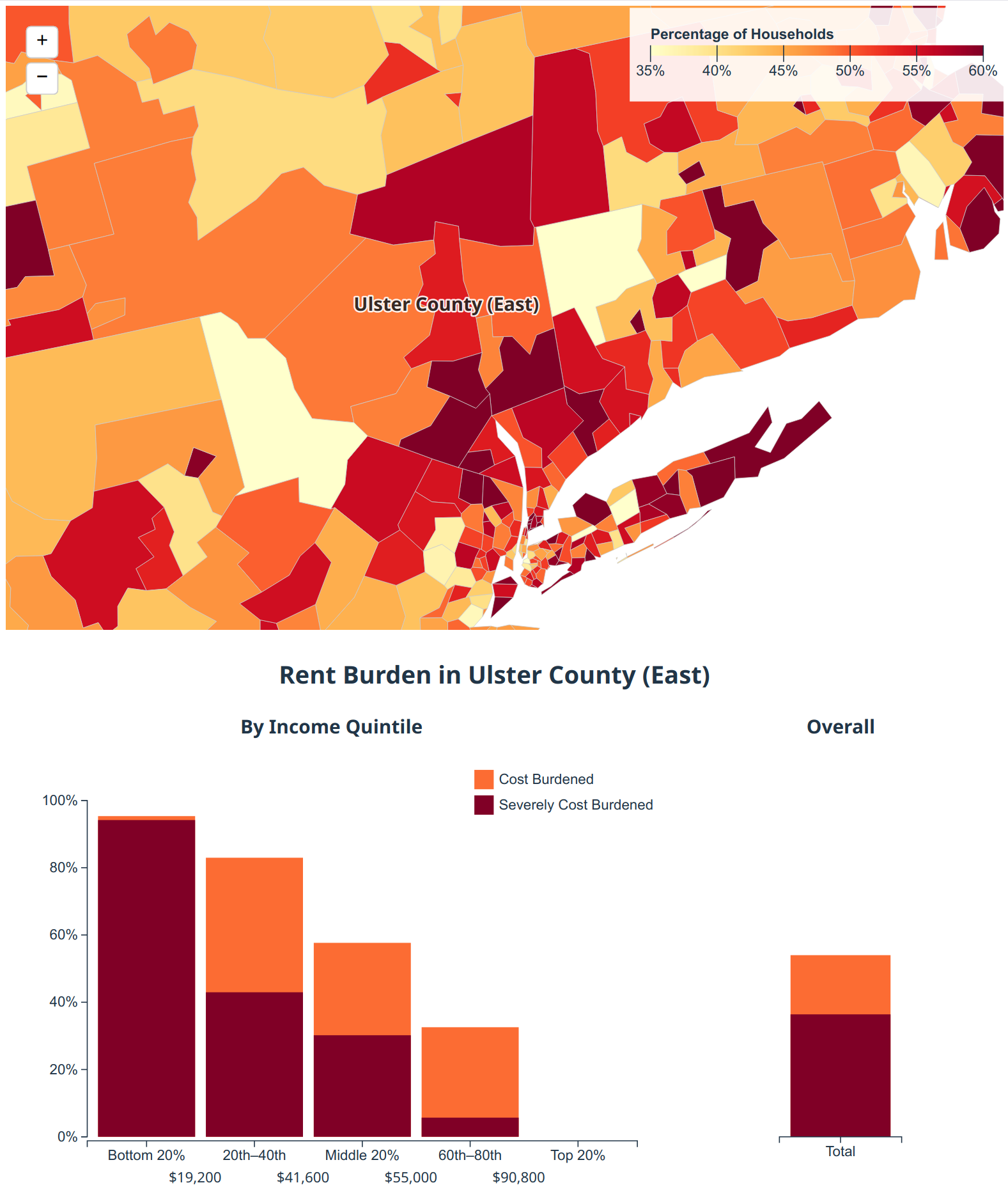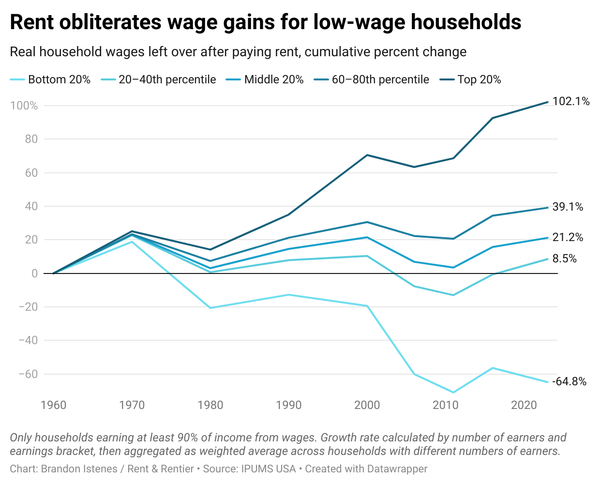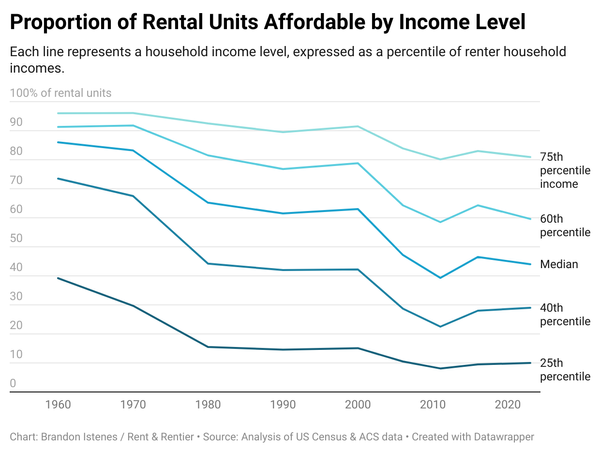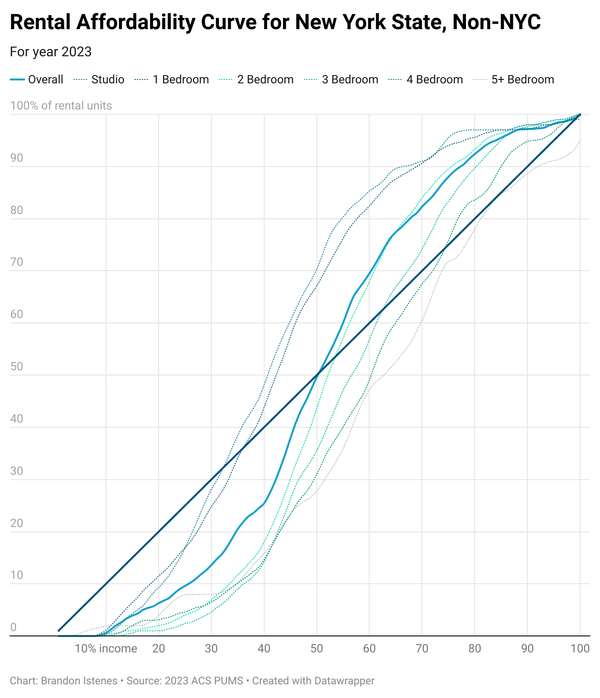Data Explorer: Rent Burden in the US



Many people, myself included, think that finance has some important role in why the rent is so damn high. There is a growing "housing financialization" literature about this. The idea is that banks, investors, and other financial actors are driving up home and rent prices. This was a

Over the last year, many people have been grappling with the question of whether the economy sucks. Or, anyway, whether the economy was in good or bad shape before Trump hit it with a wrecking ball. This remains a question of enormous political importance. After we make it out of

Housing has gotten much more expensive in the last half century. We can learn a lot about how the rental market works by looking at who has borne that burden.

In this newsletter, I'll be sharing my research into the housing affordability crisis. I hope this will be a useful and accessible resource for people trying to understand why the housing market is so broken. I'm going to try to make one to three posts per